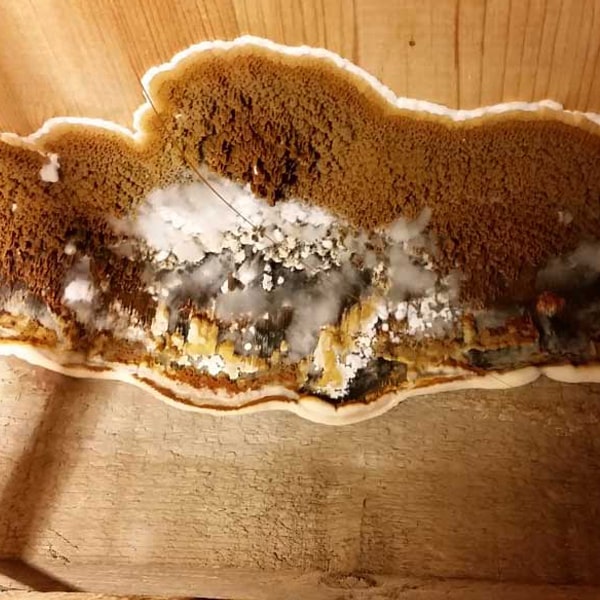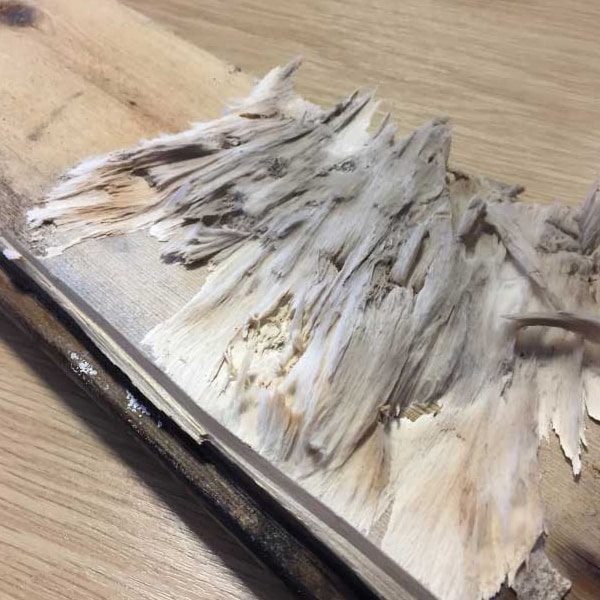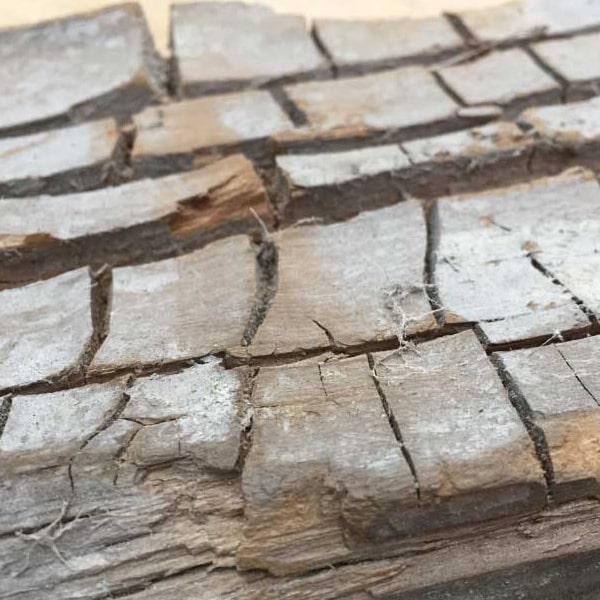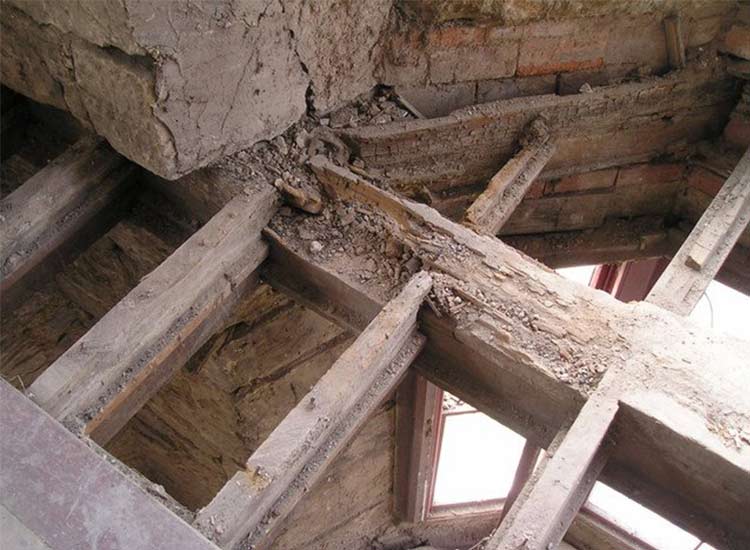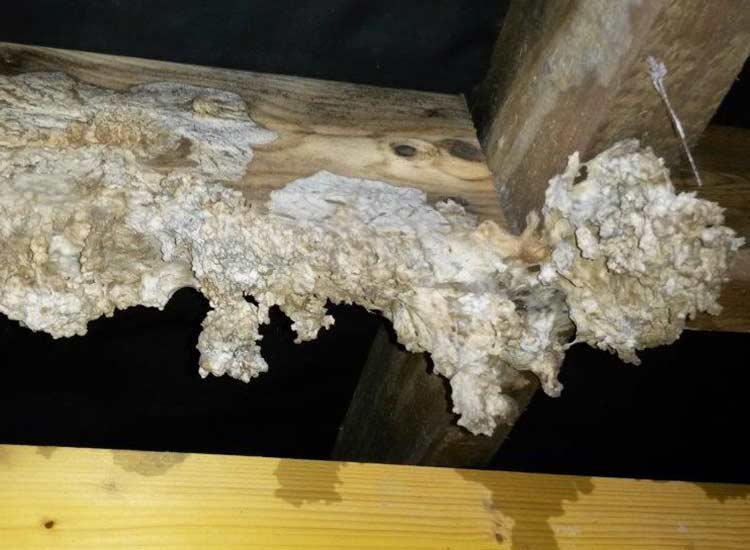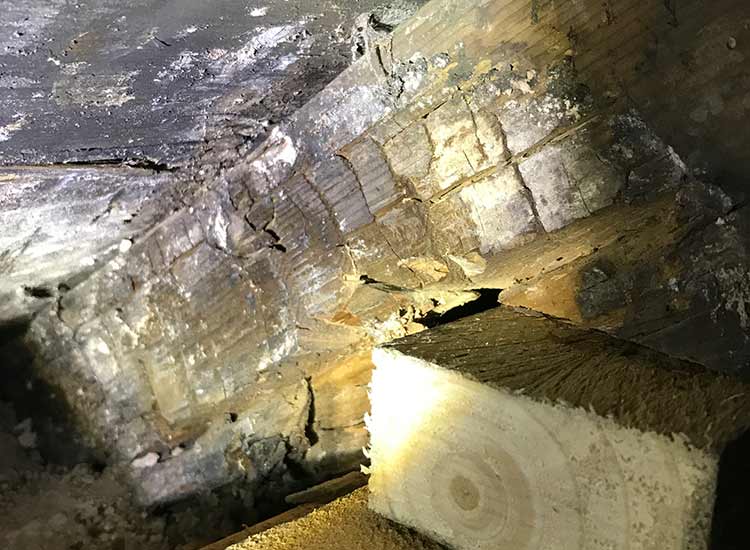Dry Rot Stirling
Dry rot is a common wood destroying fungi that attacks and weakens unprotected timbers that have been affected by damp. Our experienced property surveyors are here to help you by accurately identifying the cause of the problem as well as specifying the most effective solution.
- 30 Year Guarantee
- Award-Winning Contractor
- Experienced & Qualified, Stirling Surveyors and Technicians
What Is Dry Rot
Home > Dry Rot > Think you’ve spotted some signs of dry rot within your property? It’s always best to know for sure rather than ignoring the problem and letting things potentially get out of control.
Dry rot is a wood decaying fungus that can cause a lot of damage and spread quickly around homes and other structures. And once the outbreak has occurred, getting rid of it is very difficult. Many people who find themselves with a dry rot infestation in their home will more than likely think they’ll be ok because dry rot is covered by their building or homes insurance policy. However, in general dry rot is not covered. Our knowledgeable property surveyors are here to help you by accurately identifying the cause of the problem as well as specifying the most effective solution. Get in touch with our Stirling branch to book a property survey.
How to Identify Dry Rot?
Spotting dry rot is vital in beginning the process of getting rid of this nasty fungus. In addition to a damp mushroom odour, dry rot will have brown, brittle timbers that when touched may crumble or flake off. The timber will appear to be dry to the touch. White or grey strands, growing outwards, are what spreads the fungus. There is often a rust like dust which appears around the area where a dry rot sporophore or fruiting body is present.
It can be very difficult to identify dry rot. However, a member of our specialist Stirling team can identify the type of infestation and specify the solution to treat the affected area.
What Causes Dry Rot?
Finding the source of your rot problem is crucial to ensuring that the problem is eradicated for good.
The cause of rot is high moisture content in the timbers. Fungus which destroys wood feeds off the timber which results in dry or wet rot causing visible damage to the affected timber. Wet and Dry rot spores will only develop and begin damaging timbers if the environmental conditions are correct.
It is essential that ventilation issues and damp problems such as rising damp, penetrating damp, plumbing leaks and condensation are fixed as these are the main sources of too much moisture in a property.
The average home is made up of 70% timber. Once dry rot starts to spread, it can affect large areas of your property and cause serious structural problems.
Where Does Dry Rot Grow?
Any unprotected or untreated timber in your property from your roof to the ground floor which becomes damp is at risk of a Dry Rot attack. If you believe there is a chance that you have seen the presence of dry rot in your property then you should get advice on the affected area. Before you start looking for dry rot, it is worth knowing that it can appear in an old building or a modern structure. Dry rot is caused by dampness that germinates the dry rot fungus spore on the timber. This means that it can appear almost anywhere. This type of rot is often caused by leaking roofs, penetrating damp due to defective gutters and masonry and plumbing leaks inside your property.
It is common for dry rot to thrive in roofs, underfloor areas or behind wall fabrics that have poor ventilation.
Wet Rot Dry Rot Difference
Dry Rot
Is caused by Serpula Lacrymans and is the most serious type of fungal decay in a building. It can spread and affect adjacent timber and grow through masonry walls. Signs of dry rot:
- Clear mushroom scent
- White coloured fungal growth with yellow tinges
- Deeper cracks will appear within the wood causing loss of strength
- A fruiting body gives of red spore dust
Wet Rot
Much more common than dry rot. This decay tends to be based only in the area where timber has become wet. Signs of wet rot:
- A surface veneer may be intact to the wood with Blemishes, crookedness, softness apparent on the surface
- Rot stays close to the damp area with loss of strength to the timber
- Visible fungal growth – this may sometimes occur
- Smell – there may be a damp musty smell
Dry Rot Treatment & Repairs
Dry rot only affects unprotected and untreated timbers that have been affected by damp. Therefore, the first step of any effective treatment is removing the source of moisture.
All affected timbers should be removed and replaced with pre-treated timber, preventing contact with damp masonry. Any remaining adjacent timbers must be treated with an effective fungicide. There are products that enter the timber itself as well as ones designed to coat the timber surface. A fungicidal gel can be applied to the timber surface and comes in different concentrations to treat dry rot.
Dry rot eradication must be dealt with thoroughly and should be treated by specialists. Our team will help you to locate and eliminate the dry rot problem no matter how big or small.
Dry Rot Specialists Stirling
Most structures throughout the United Kingdom have large sections of the building formed by timber. Whether it is supporting beams and posts, or simply the roof, timber has been used for thousands of years and is still one of the most commonly used building materials today.
As a result, decay by fungal growth and infestation by wood boring insects is extremely common. The professional surveyors at Richardson & Starling have over 85 years of experience with regards to treating dry rot. If you are looking for a professional dry rot treatment service for your property, please do not hesitate to call our Stirling branch on (01786) 462 231.
30 Year Guarantee
Free automatic transfer to the new property owner if sold.
After eight decades of successful property surveys and repairs, we’re confident to offer you a 30 Year Guarantee that transfers with the Property.
Richardson & Starling are long standing members of the Property Care Association (PCA) and the Guarantee Protection Insurance scheme (GPI). This demonstrates our ability to meet technical and financial requirements to offer an insurance back-up to our own long term guarantees if you would like this.

